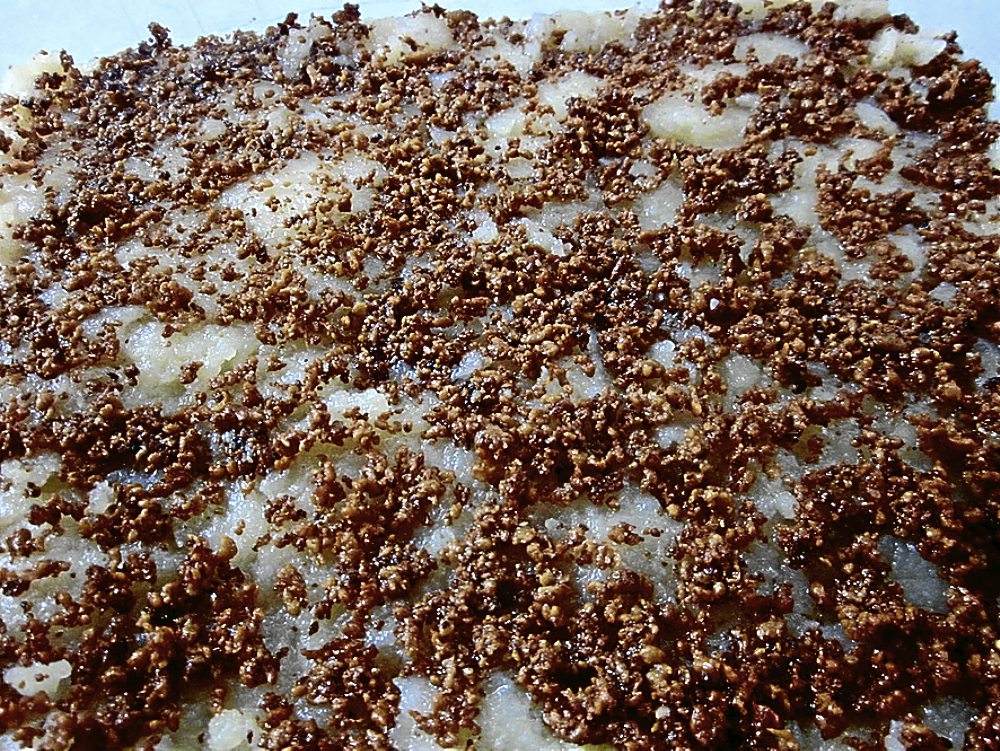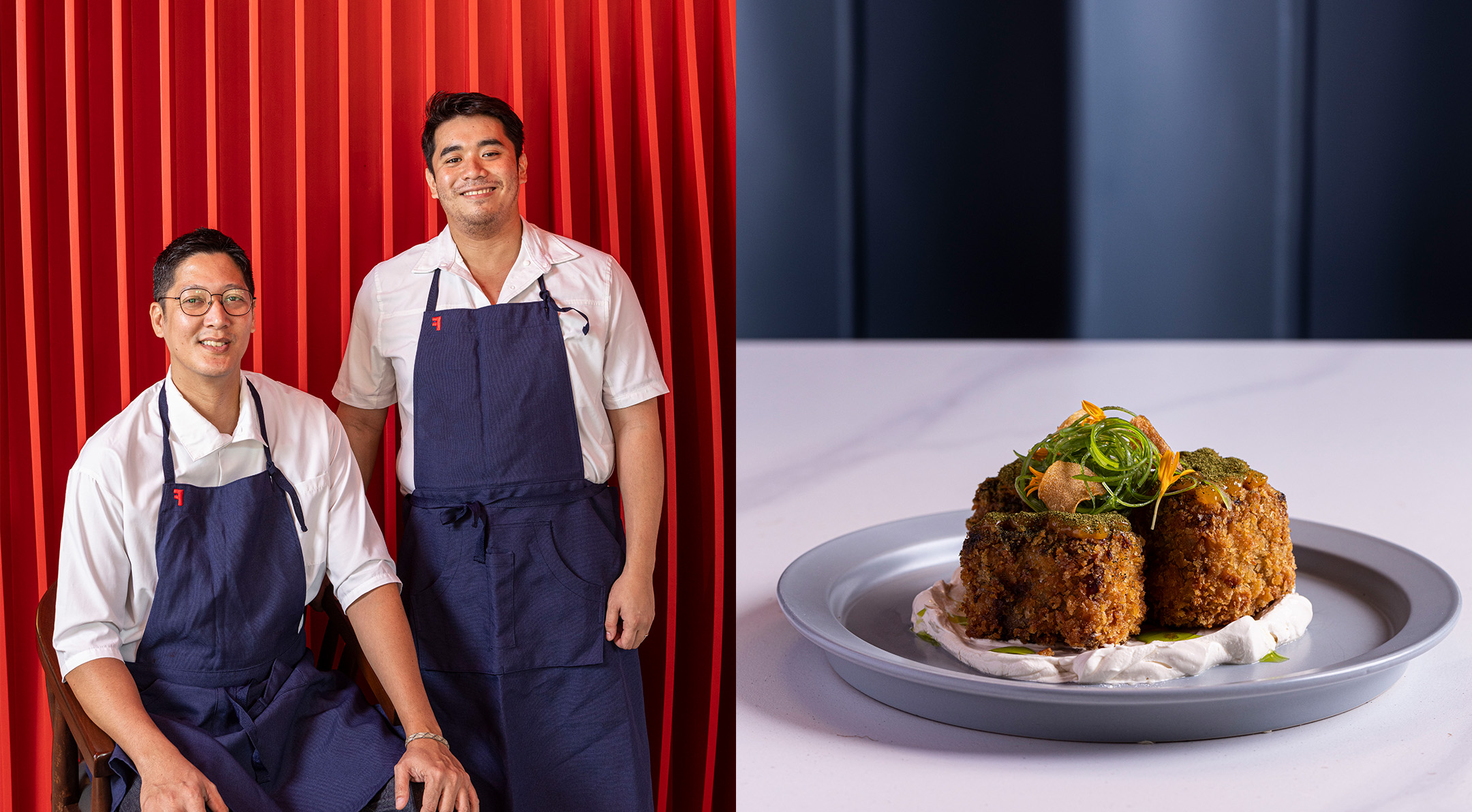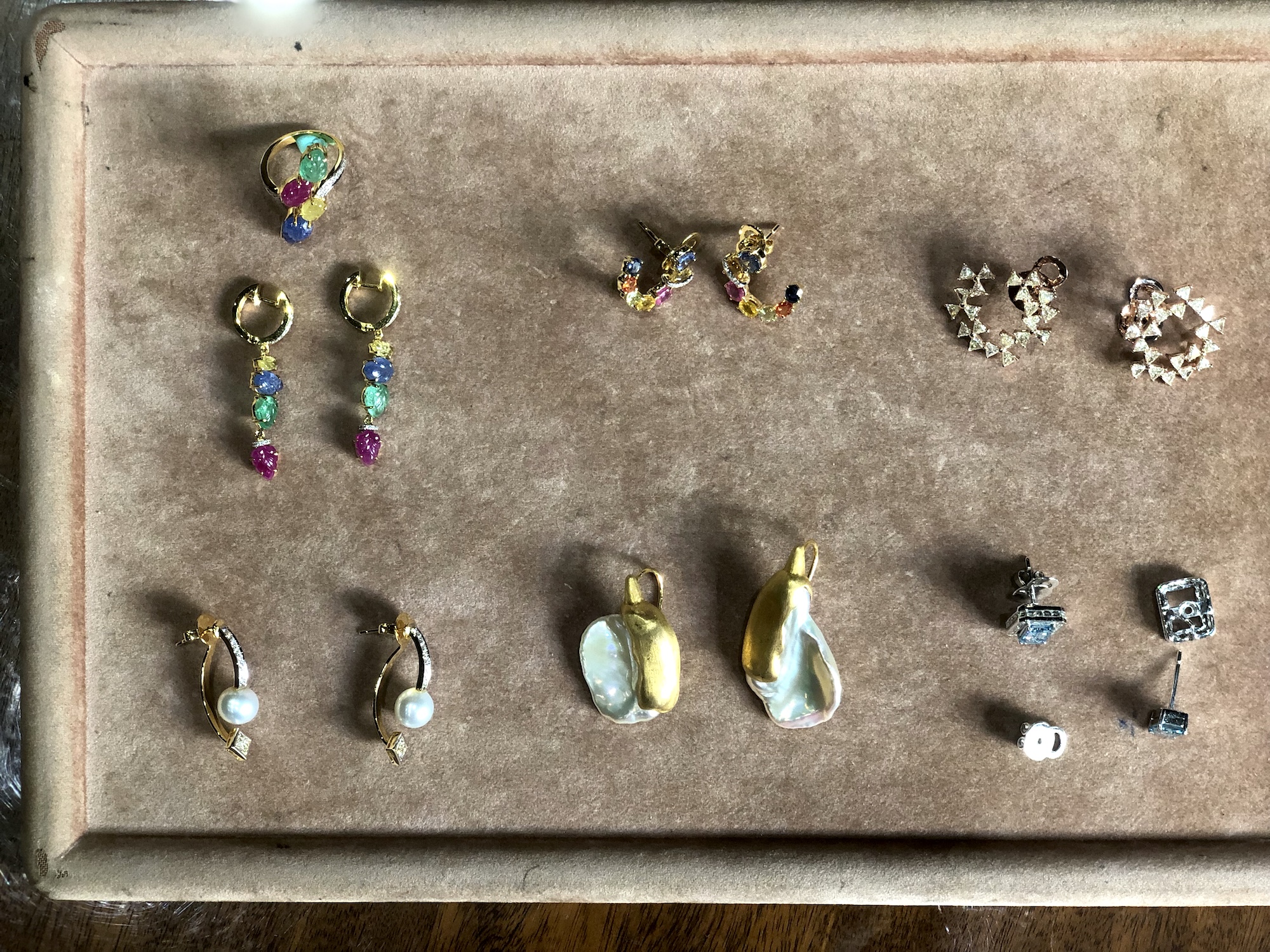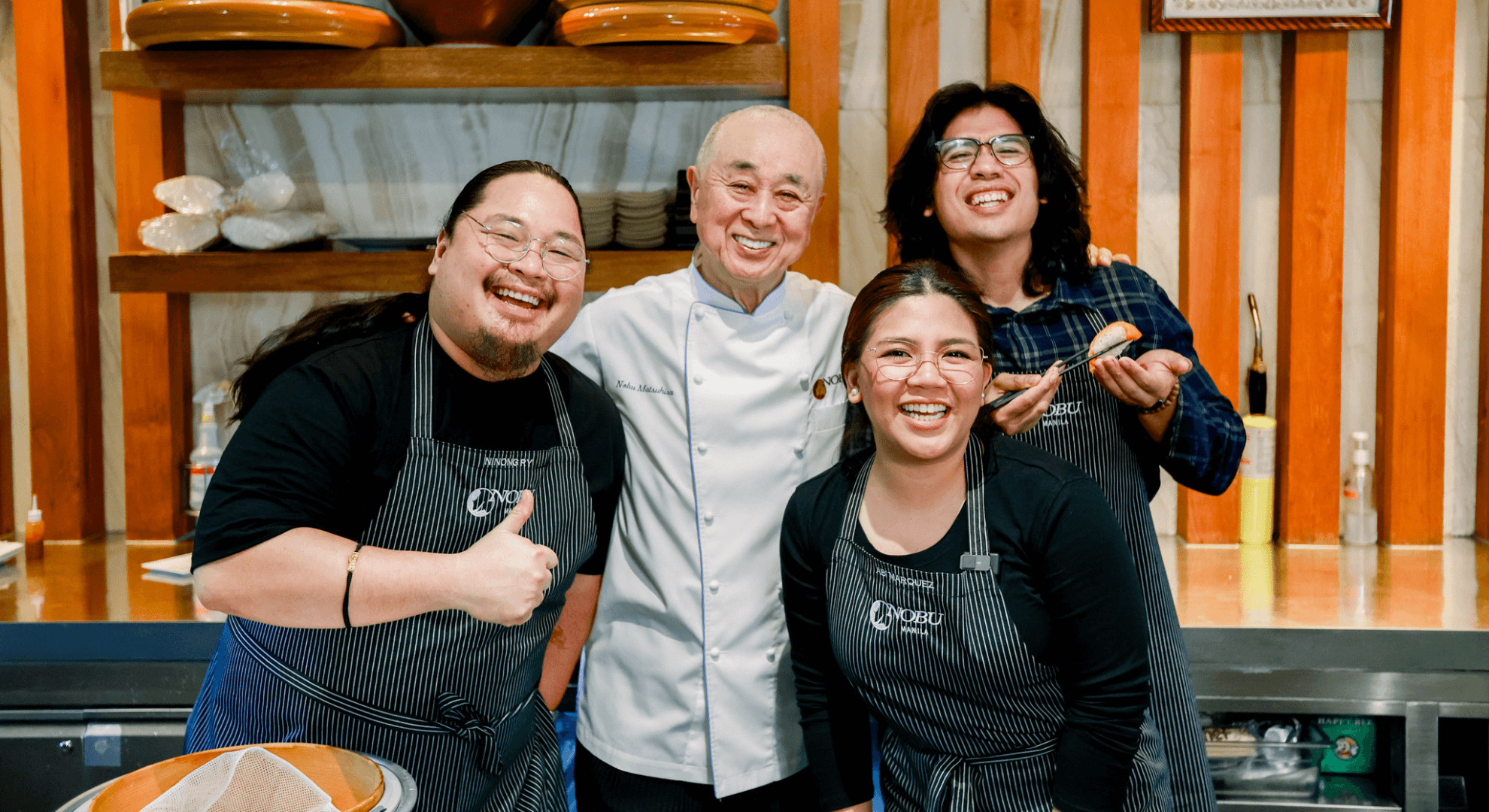
Pancit molo and pancit luglug may sound familiar, but what in the world is pancit bato?
Literally, that could mean a rock noodle dish—not rock as in rock and roll, but rock as in stone. So does pancit bato mean stone noodle then?
Actually, it’s one of the most intriguing dishes being served in Café Jeepney’s lunch and dinner buffet spreads. Part of Hotel InterContinental’s ongoing Bicol Food Festival, pancit bato is named after the method of making the noodles.
According to guest chefs Maria Pacao and Jonathan Cabanela, the noodles are dried on volcanic rocks originating from Mayon Volcano eruptions. The volcanic rocks being very hot, they dry the noodles quickly and keep them from getting spoiled easily.
Although the noodles are dried only in Legazpi and Albay where the volcanic rocks are scattered, they’re sold all over Bicol.
The dried noodles are cooked with generous amounts of hearty ingredients that include fish balls, quekiam, shrimps, pork, chicken, cabbage, green beans and bell peppers.
While pancit bato may seem obscure, other Bicolano dishes are more familiar. Many use copious amounts of coconut milk and hot, spicy chilies, which is understandable since coconuts are a major crop in this region.
Spices help keep Bicolanos warm when the weather gets cold (as it often does).
A typical Bicolano dish also being served in Café Jeepney’s ongoing food fest is the Bicol Express, diced pork cooked in hot chilies, coconut milk and balao, a less salty and tamer version of bagoong.
Then there’s the ever-popular laing, native gabi leaves cooked in coconut milk and chilies. Pacao explains that when she cooks laing, she avoids stirring the mixture so that the leaves don’t give diners an itchy throat.
Also on the menu, in one way or another, is a pride of Bicol: the miniature pineapples that grow abundantly in Daet. Perhaps because the pineapples are smaller, the sugar is concentrated, making the pineapples very sweet.
Bicolanos use these pineapples to cook dishes such as pininyahang alimango (crabs in pineapple) and pininyahang manok (chicken in pineapple).
During the launch of the festival, Daet’s Mayor Tito Sarion distributed boxes of a unique Bicol delicacy: pilipiña, a pie made with pineapple and pili nuts, which is another crop Bicol is famous for.
Here’s a recipe given by Pacao and Cabanela for one of Bicol’s popular desserts: maja blanca, made with—what else—coconut milk.
(Bicol Food Festival is part of the lunch and dinner buffet of Café Jeepney, Hotel InterContinental, until Sept. 30. For information and reservations, call 7937000.)
Maja Blanca
2 c cornstarch
3 c coconut milk (kakang gata-see tips)*
1 c evaporated milk
1 c + 2 tbsp white sugar
Latik topping (optional, see recipe below)
Combine cornstarch with coconut milk and evaporated milk. Stir well until cornstarch is dissolved. Strain the mixture into a thick-bottomed, wide pan or casserole, then add sugar.
Cook over low heat, stirring constantly until mixture thickens and becomes almost solid, around 20 minutes.
Pour mixture into a serving dish and smooth the top. If desired, top with the latik, then chill until firm before serving.
For the latik (coconut granules) topping:
1 c coconut milk (kakang gata- see tips)*
In a thick-bottomed, wide pan, heat the coconut milk over low heat, stirring constantly so the bottom does not burn.
Let mixture simmer until the liquid has evaporated and tiny brown granules form (the oil will separate from the granules). Transfer granules to a clean bowl and use as topping for the maja blanca.
For more tips, recipes and stories, visit author’s blog: www.normachikiamco.com and Facebook fan page: www.facebook.com/normachikiamco. Follow on Twitter @NormaChikiamco
Cook’s tips:
*Kakang gata is the first extraction of coconut milk from squeezed coconut meat. It’s thicker than the second extraction of coconut milk. For this recipe, use the first extraction, or you can also use canned coconut milk.
If using the canned variety, choose the ones labeled coconut cream—this comes from the first extraction. Canned coconut cream is available in the baking section of major supermarkets.
Be sure to use thick-bottom pans so the coconut milk does not burn.
To smooth the top of the maja blanca after you’ve poured it into the serving dish, use an offset spatula.












































